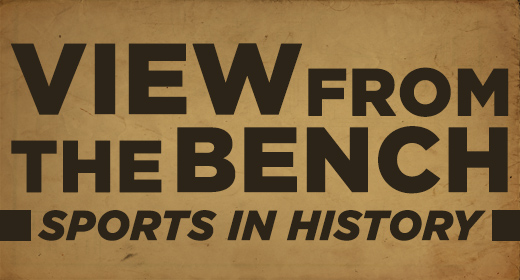It’s nearing the All-Star Game and the annual debate of who should and who should not be on the roster is well on its way. The argument is similar in nature to the “bubble team” controversy that leads up to and follows selection Sunday just before the start of the NCAA’s March Madness. There are always questions about some who qualify and many more about those who are deserving but do not get in.
Well, this year’s all-star roster debate focuses on Yasiel Puig, the “5 tool” can’t miss guy that has all but single-handedly returned the Dodgers to relevance this season. Yet he has only 127 official at bats (plus 5 walks) as of July 8, although those plate appearances have been prolific. He is hitting .409 and has 8 home runs. He has stolen 5 bases. He has a cannon of a throwing arm, although he has not yet been introduced to a cut-off man or what the purpose is of a cut-off man. He has also struck out 31 times and that may be the most telling statistic of them all, which I will explain later.
Baseball purists argue that Puig hasn’t earned his stripes, has no “body of work,” and has not yet passed the imaginary threshold of big league experience to earn his spot on the all-star roster. If the roster spot is based upon a body of work, Puig doesn’t yet belong on the All Star team but perhaps, neither did Joe DiMaggio in 1936 or Tom Seaver in 1968.
There was a similar argument made by some senior NBA stars during Michael Jordan’s rookie year. In fact, folklore has it that certain stars, such as Isiah Thomas, organized a freeze out of Jordan by denying MJ the ball during the 1985 All Star Game after he was voted by the fans to start in his rookie season. Imagine someone now arguing against Jordan’s right to play in any all-star game, even at the start of his career? To be clear, I am not suggesting that Puig is the “next coming” in baseball, and use of a Michael Jordan example when discussing Puig may be a sacrilege. But Puig’s preliminary numbers don’t rule his future stardom out as a possibility and he has been no less dominant in the first half of the 2013 baseball season than was Jordan during the first half of the 1984-85 basketball season.
The other school of thought is that baseball can only be aided by infusing the excitement and promise of its rising stars. How does it do anything but help baseball when you use the big stage of the all-star game to introduce the young phenoms that enter the scene by the beginning of June each year? Also, if baseball really wants to reward accomplishments on the field for the season in which someone qualifies to play, don’t play the game until after the season is over when a player can be judged based upon a full season of work. Ridiculous, right? But maybe that makes the point. You can’t hold a mid-season event without running into at least some players who have all-star numbers but less than meaningful major league experience.
So how about a solution that addresses both ends of a baseball player’s career? Add two roster spots to each league’s team. One roster spot would be designated for the “rising star.” It would eliminate debates about the Bryce Harpers and Yasiel Puigs of the game. The second spot would be the “legends” spot. If there was such a designation, no one would have questioned Cal Ripken’s place on the 2001 all-star team, which was criticized by some for being overly nostalgic and not based upon current performance. Had he not been selected in 2001, a year in which he was hitting .239 at the all-star break, Ripken would not have homered off Chan Ho Park in the 3rd inning, would not have been named the 2001 all-star game’s MVP, and we would have all been denied the opportunity to grant to a true star his well-deserved curtain call. We unofficially granted legendary status for Ripken, and we did it 40 years ago for Willie Mays, who was ending his incomparable career that year playing for the New York Mets, a year in which he ended the season batting a meager .211. He had one at bat in the 1973 All Star Game and struck out. But who cared? He deserved the moment and we must grant to those ending their careers the kind of send-off they have earned.
So I say: “Let ‘em play” and for this year, I am referring to Yasiel Puig! This approach should apply equally to those players whose sun is about to rise and those whose careers are at the last glow of light at sunset.
Having made a case for Puig’s inclusion for the 2013 All-Star Game, I close with a moment of my own prediction about his season. Puig’s numbers will soon re-enter the earth’s atmosphere and he will appear more like a mortal man. You see, Puig swings at everything and that turns my attention back to his 31 strikeouts. Major league pitchers are in the big time because they adjust. As time passes, even the fourth or fifth starter on each team will expand the size of the plate and make Puig swing at their pitches. If he took a moratorium on swinging for some time, my guess is that he would likely garner far more walks than strikeouts; that’s how far off the plate I believe they will pitch to him. And unless he adjusts and becomes more discriminating at the plate, many will wonder at the season’s end why there was so much fuss about Yasiel Puig and this year’s All-Star Game.



